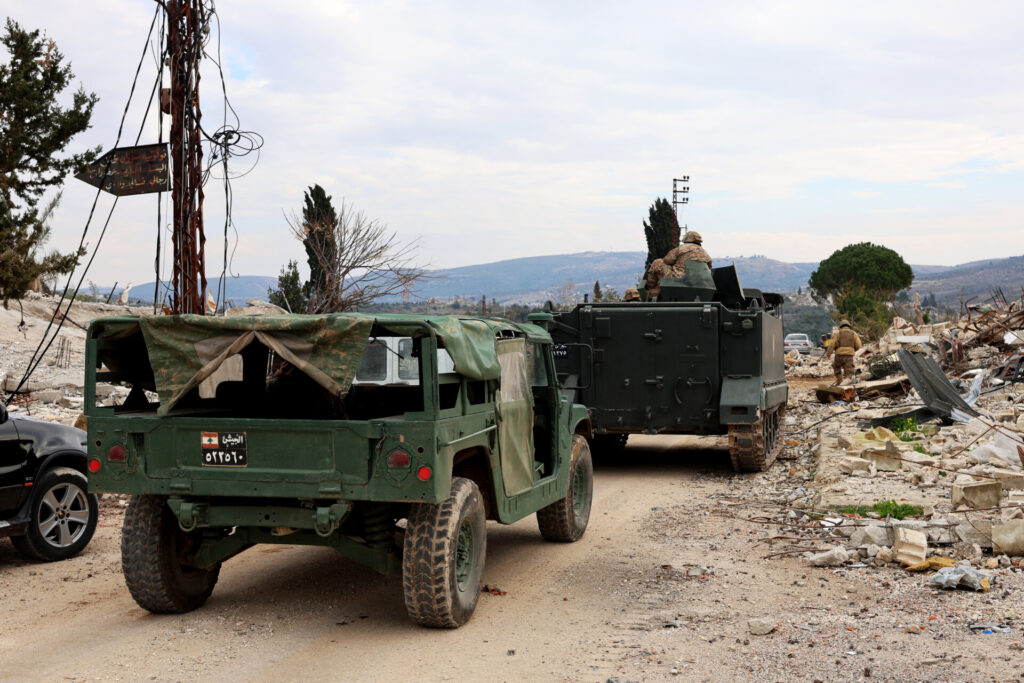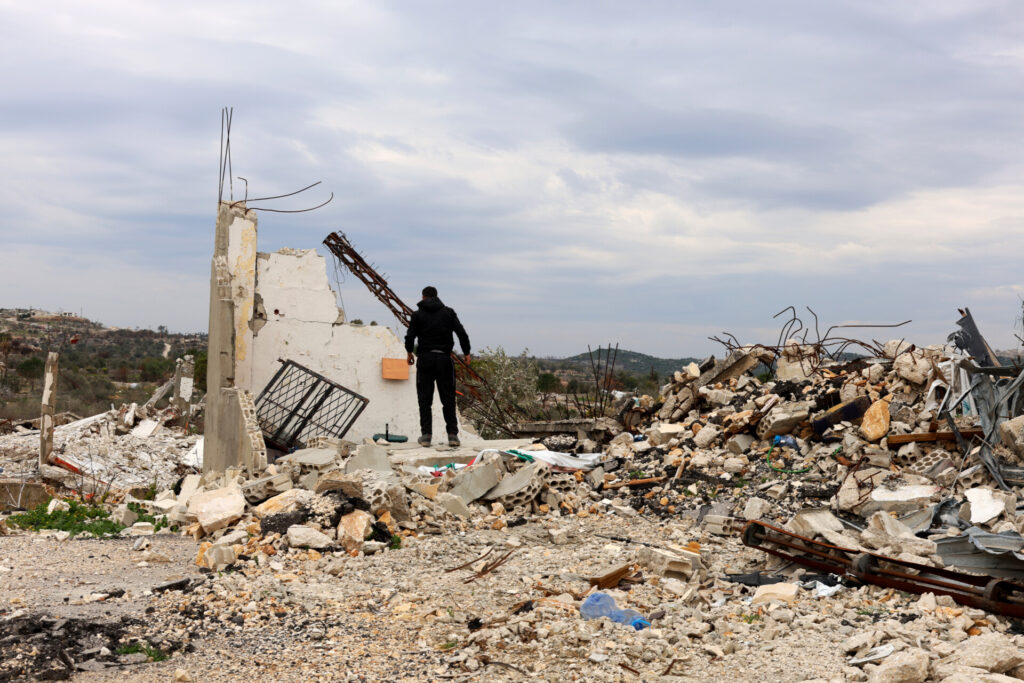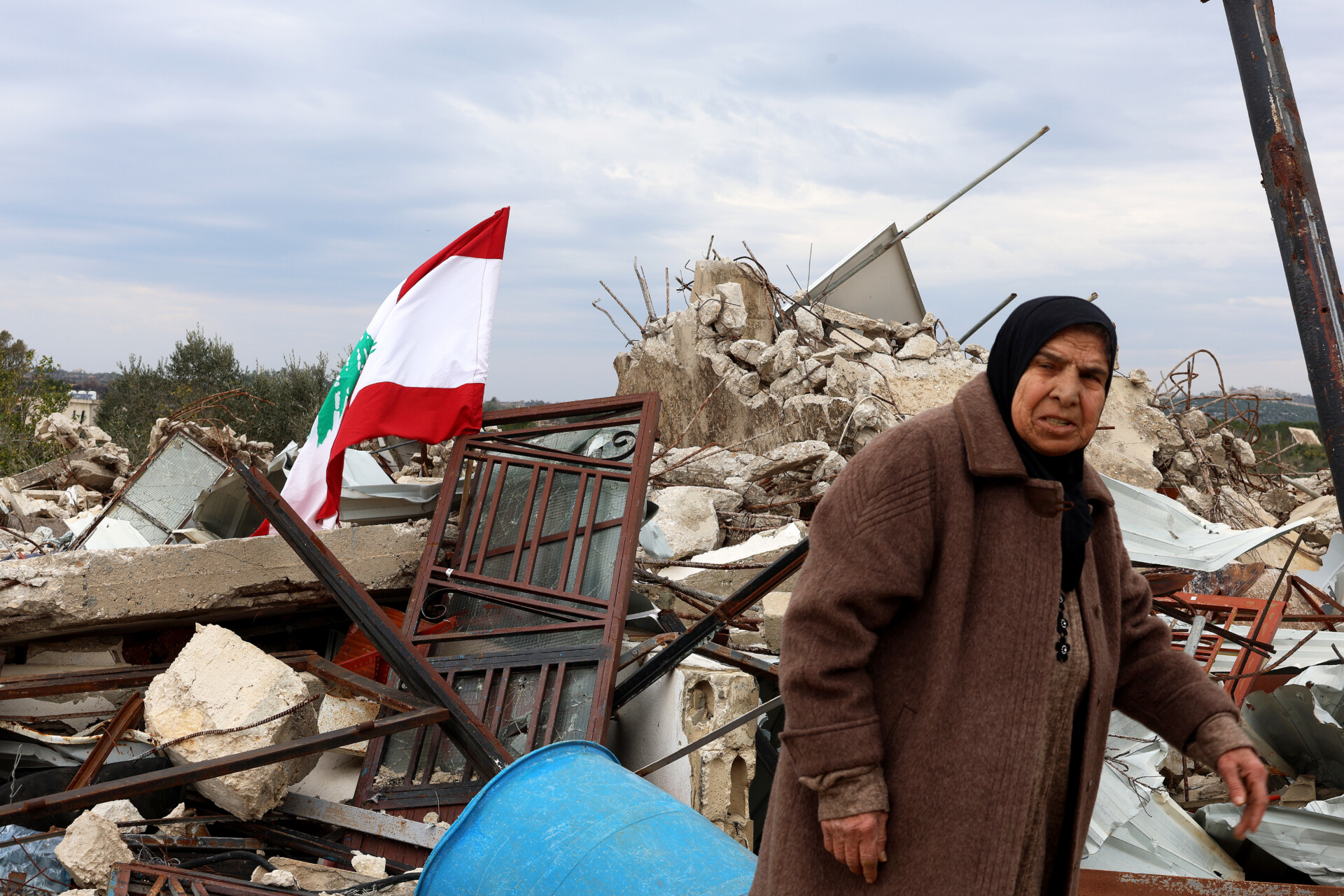On Feb. 2, a Lebanese exodus left behind the battered city of Tyre, heading south on the ocean road toward Naqoura and the border with Israel. Beneath the dull gray of overcast skies, with the yellow pennants of Hezbollah hoisted from crowded cars, the procession crawled slowly forward, flanked to the right by white Mediterranean sands and to the left by the blasted remains of picturesque hill villages. Across Lebanon, down from Beirut’s Dahiyeh, from Nabatieh and the Bekaa, they came to claim their homes back after 126 days of occupation.
It was the last day of Lebanon’s 60-day ceasefire, the day Israeli forces were due to complete their withdrawal. Over the previous days, families had gathered on the edges of the Israeli “exclusion zone” in anticipation of their return. But the Israelis did not leave. Instead, they insisted upon staying, extending — with Washington’s approval — their occupation for another month. Rather than withdrawing, they fired upon the crowds of civilians attempting to return, killing 24 and injuring hundreds.
It was a massacre — hopefully the last in this most recent war between Israel and Hezbollah, which has killed over 4,000 in Lebanon, but only the latest in a country whose history is a litany of such specters.
Approaching Naqoura, groups of women stood handing out Hezbollah iconography — flags, stickers and posters of the war’s martyrs — most of them depicting the late Hassan Nasrallah, the party’s secretary-general who was killed in September. It was unclear who organized these handouts, but Hezbollah’s critics in the Lebanese media fumed in the days following that the group had encouraged — and may have had a hand in organizing — such a reckless return.
Immense masses of people are on the move, not just in Lebanon. In Gaza, thousands streamed back to the wasteland of the enclave’s northern half. In Syria, exiles and refugees are returning to what’s left of their country after their victorious revolution.
As the car crawled up toward the top of Ras Naqoura and along the road that runs parallel to Israeli positions through the villages of Alma al-Shaab, Duhaira and Yarin, the scale of destruction became apparent. Some blasted homes still stood, their ruins somehow legible. Here, a tank shell vaporized a corner of a house. There, a high-arching rocket burst through the roof, blowing out the ceiling and upper walls. Many buildings formed strange geometries; intact upper floors balanced precariously on a single wall, a corner drooping low to kiss the overgrown grass out front.
Other buildings were simply gone, reduced to a pile of rubble, returned to their constituent parts. These buildings seemed different — not so much caught in the crossfire as deliberately removed. Israel had been carrying out controlled demolitions in these villages right up until the last moments. Other signs pointed to this fact. The tarmac on the road had been entirely stripped away, cars skidding and mopeds slipping on the dirt as they pushed onward. The trees lining the track facing Israeli positions had all been cut down, providing the occupiers with an uninterrupted view of the masses now making their way through these villages for the first time in over a year.
In Alma al-Shaab, the Lebanese army had blocked the road leading onward to Duhaira. A crowd of returnees was forming around them, with palpable anger. “This is our land, those are our homes — what right do they have to stop us from going home?” complained a young woman shrouded in a Lebanese flag. I was uncertain who “they” was referring to. The Lebanese army had only deployed to Alma al-Shaab that morning and had received no orders to advance further. One soldier claimed that an Israeli Merkava tank had been spotted in Duhaira although we saw no proof of this.
As we turned to leave, hoping to find an alternative route into the villages further along the border, a cry rang out. People rushed back to their cars, whooping with joy. The army had opened the path home.
Residents had ignored the military’s pleas to stay away, deciding instead to circumvent the army checkpoint by trekking for miles over the rugged terrain of southern Lebanon from the villages of Jubayn and Tayr Harfa to the north. Amid the chaos, the army ultimately relented, recognizing that, unable to control such a mass movement of people, it was safer to accompany residents back to their villages. Duhaira and Yarin were thus, somewhat accidentally, liberated.

There was not much left to liberate in Duhaira. It is now just an open hilltop dotted with pancaked buildings and piles of rubble. As elation mingled with grief, it was hard to tell if this was a victory parade or a funeral. For many, one cannot be separated from the other. One returning resident, Hala, wandered shell-shocked through the rubble, a landscape that was once so familiar, now unrecognizable. “Of course I am happy to come back, but I am heartbroken because I can’t find my home,” she lamented. “I don’t know where it is. The well is gone, so is the mosque and the cemetery. Everything is gone. There is no life left here, but this is the price of victory.”
“Intasarna” is the phrase of the day: “We won.” It was repeated over and over by many who had lost everything, whose homes were gone, whose loved ones were dead.
“This is our land. They want to destroy us on our land, but it is the land of our ancestors, and it is not an inheritance to be given away,” railed Hassan, as his daughter sat beside him cradling a stuffed animal. “We always dealt with our enemy with honor and dignity. Clearly, they did not,” he said, referring to the Israelis. “Now we just want to live in peace and rebuild our lives.”
The presence of the Israelis was evident. On the side of a wall of a bombed-out home, a young soldier had scrawled in Hebrew: “Mom and dad, I love you. Nunu, I love you.” A bizarrely human message amid such an inhumane landscape. Two men retrieved an Israeli flag from a house, and within moments it had been doused in petrol and set alight. A small crowd quickly gathered around it cursing the enemy.
“This was the most beautiful home in the world, it was where my children made their memories,” Ali recounted, pointing to a pile of concrete behind him. He was displaced eight times following the start of the conflict on Oct. 8, 2023, fleeing progressively farther north as it grew and spiraled out of control in the ensuing months.
“I am exhausted now. We have lost so much, but finally we are able to return to our land. This is the only thing that matters. We are still free.”

On a squat hill above Duhaira sit the Israeli positions along the U.N.-demarcated Blue Line. An ashen security fence stretched across the horizon, interspersed with the silhouettes of watchtowers and radio masts. Their presence was menacing. It felt exposed; they were undoubtedly observing everything. Occasionally, the Israelis fired airburst stun charges into the air, perhaps warning residents not to approach, or perhaps just to make us all jump.
Hezbollah flags, planted defiantly upon mounds of rubble, fluttered in the breeze only several hundred yards from the Israeli positions. Netanyahu had pledged to “push Hezbollah beyond the Litani.” It would appear that Israel has achieved that. There was no notable Hezbollah presence in the southern villages although an elderly man openly greeted a car full of youths: “Give my greetings to the commanders,” he said. While Hezbollah may have relented to Israel’s demand to withdraw behind the Litani River, removing Hezbollah from the border seems impossible. Its members are from these villages, they grew up under the watchful eye of their Israeli observers, they have lived their whole lives in the presence of the enemy. Their flag will continue to fly on the border for a long time to come.
Yet affiliation with Hezbollah is not unanimous on the border. In the next village of Yarin, a Sunni community, the funerary atmosphere was far more pronounced. “They have set us back a hundred years,” a woman called out, sitting despondently amid the ruins of her former home. A group of men dragged a poster of Saddam Hussein from the rubble, cleaning off its dirt and propping it up proudly.
“We have no affiliation to Hezbollah. Our houses have been destroyed for no reason, and now they have come and planted their flag on my home,” fumed a woman who asked not to be named. “They call this victory, but if you want to witness a victory, look to the people of Gaza. That is victory, there is no victory here.”
“May God not forgive them,” she wailed as she left.
Leaving Yarin, the army had redeployed at the entrance of the neighboring village of Marwahin. The Israeli military is still there, some 500 yards away. Throughout the morning, news had been filtering through about the killings across the south: two shot dead in Mais al-Jabal, a drone strike on a crowd in Yaroun, killings in Houla and Aitaroun. Within moments, the soldiers began screaming to clear the way. A Humvee raced up the track, carrying several troops crowding around a wounded man. The Lebanese army would later announce that one of its soldiers was shot dead in Marwahin that morning.
In 2006, during Hezbollah’s previous war with Israel, 21 civilians were killed in Marwahin when Israeli soldiers fired upon a convoy of cars fleeing the village. Now they are being killed as they try to return home.
Passing back through Yarin, we met Samar, sitting despondently on what used to be her doorstep. “I’m 77, I have witnessed war since I was 10,” she mumbled. “This is my third home that has been destroyed here. Every time our lives are destroyed, we are expected to start all over again.”
“How many more times will I need to rebuild before I can live in peace?”
“Spotlight” is a newsletter about underreported cultural trends and news from around the world, emailed to subscribers twice a week. Sign up here.



